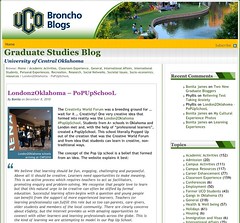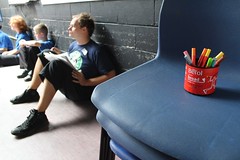Young Londoners (aged 15-25) – who live in one of the 5 Olympic host boroughs can now apply to join the CREATE Programmers group – working towards the delivery of an exciting Olympics focused event for young people at the View Tube, Stratford on 17 July 2010.
The event will be young people led, and is a day long exploration and celebration of how young people can engage in London 2012 Olympic and Paralympic Games.
The CREATE Programmers is a group of inspirational young people from the 5 Olympic boroughs, whose mission is to produce culturally diverse projects by highlighting the amazing opportunities that exists for young people in London through collaboration with local communities, businesses and individuals.
They aspire to make real connections around the Olympic moment and to use its legacy in east London to make life changing possibilities a reality.
A New Direction is the key strategic body for connecting young Londoners with the city's creative and cultural energy. In collaboration with the A New Direction programme team, the course will be led by an experienced professional with expertise in events management and production. Participants will have access to industry and cultural professionals (Press and PR, Olympics Host Boroughs Unit, CREATE Festival) and will work over six weeks towards the delivery of an Olympics facing event at the View Tube on 17 July 2010.
What does being a CREATE Programmer offer:
Project management of an event on 17 July 2010
Responding to a professional brief
Arts Award accreditation
Blogging and engaging with other social media and documenting
Visiting cultural events, gigs, exhibitions as part of the CREATE festival (http://www.createlondon.org)
Team work and collaboration with young filmmakers, photographers, and journalists
Support for a pathway into further training, study and employment
How to apply:
Please read through the job description and person specification, which tells you what we are looking for and what kind of commitment is required.
Complete the application form downloadable from www.anewdirection.org.uk and email to create@anewdirection.org.uk with subject header ‘CREATE Programmer’.
Closing deadline for applications is 17.00 on Thursday 27 May 2010.
(You will be notified by Friday 28 May 2010 if you have a place on the interview day, on Wednesday 02 June)












































